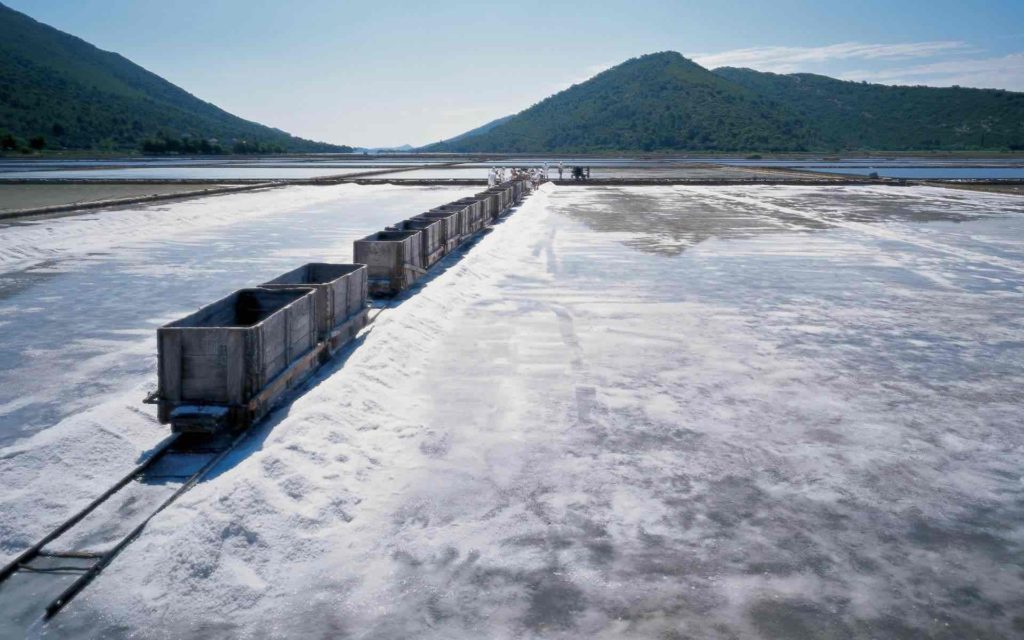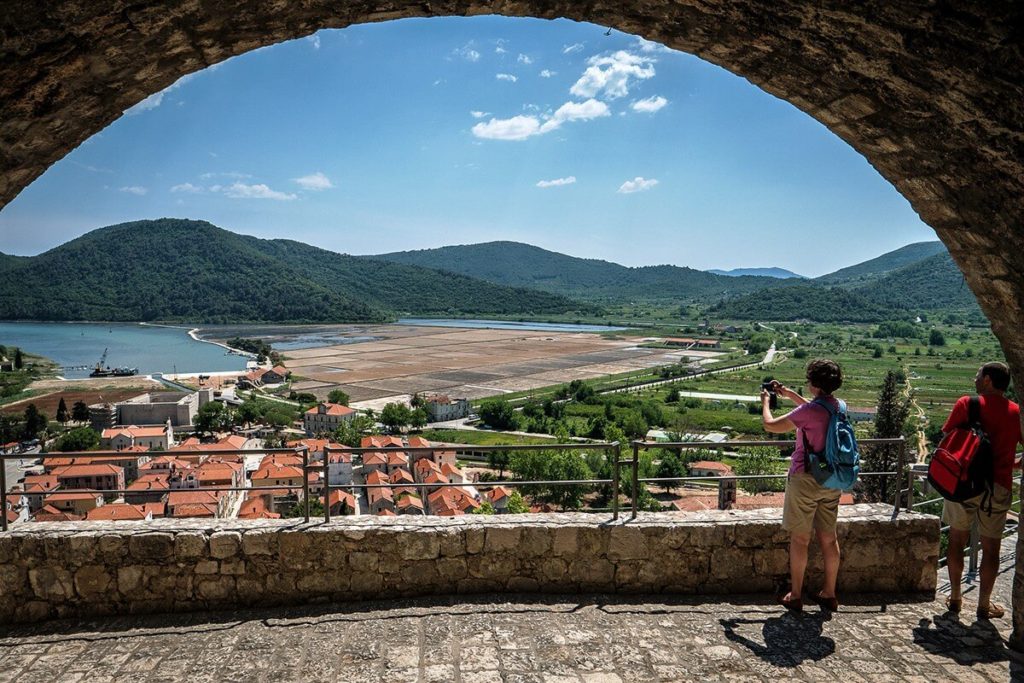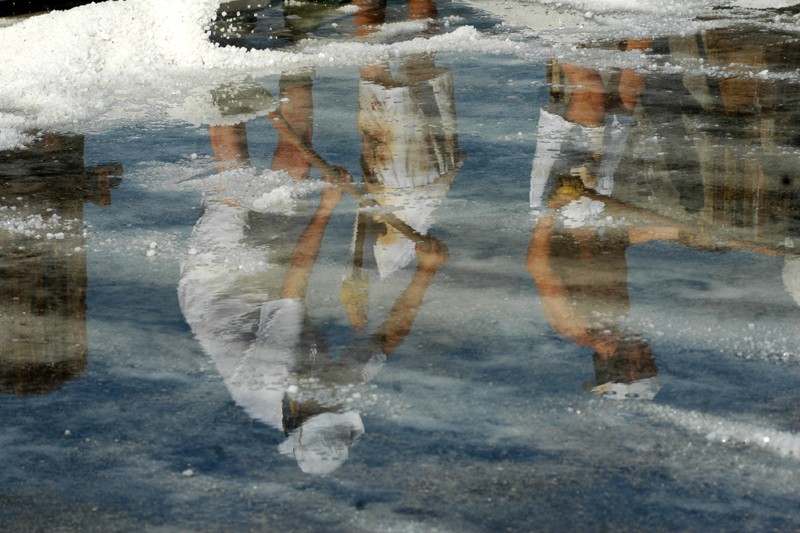The area of Ston thanks to its geographical position, fertile fields, an abundance of water and salinity, natural resources as well as a short peninsula which connects Pelješac with the mainland, became a very important residential area for people. Solana dates back to Roman times, two thousand years B.C.
In ancient times the area was inhabited by the Illyrians and Greeks and from 167 B.C. the Roman rule begins and this is the first time that exploitation and salt collecting is mentioned in are Ston area. The Ston salt pans are the oldest in Europe and the largest preserved ones in the history of the Mediterranean. Way back in 877. The Ston diocese is mentioned, so it is assumed that this is the oldest diocese on Croatian ethnic space.

The Romans leave behind them the distribution of the Ston fields and the name of this area Stagnum – Stamnum which means stagnant or still water. This indeed is an indication that already in those times there was salinity and that the name came from the natural characteristics of the area – the salt pans. After a turbulent history and various rulings in 1333 Ston becomes an integral part of the Dubrovnik Republic.

Along with Dubrovnik, Ston was economically and strategically the most important place in the Dubrovnik Republic and the second town in Europe that was built planned and it came from the salt that brought 1/3 of the income to the Dubrovnik Republic. To protect the pans monumental walls were built in the 14th and 15th century and they were a reflection of the Dubrovnik walls and the fortresses carry the same names. The largest enterprise during those times was the construction of two new towns as part of the Dubrovnik Republic – Ston and Mali Ston and a mile-long wall between them with a tower on top of the hill (14th century). This is how the whole Pelješac peninsula was protected from potential attacks from the land in order to preserve the biggest value in the depths of the bay „Ston salt pans“ which for centuries produced sea salt which was the best selling product of the Dubrovnik Republic. The former value of Ston as the city of salt is confirmed even nowadays in the plant of the oldest active salt pans in the world.

The tradition of harvesting salt has been passed on for over 4000 years and since then salt is produced in the same way with only the assistance of the sea, sun, and wind. Solana Ston consists of 58 pools divided into 5 groups as the whole sat producing process has to go through five stages which lasts one to two months depending on weather conditions.
There are nine pools for the crystallization process and all but one Mundo (world) are named after saints (Francis, Nicholas, Balthazar, Anthony, Joseph, John, Peter, and Paul). During the Dubrovnik Republic times, the pools Blaise and Lazarus which have granite bottoms were also used and from which the purest salt was extracted and was then sent to the Vienna court.

Salt is produced by a process of seawater evaporation in the big shallow pools of the salt pans and the harvest and salt production takes place during the summer months, more precisely from April to October. From the nine crystallization pools you can harvest about 500 tons of salt annually. In the Dubrovnik Republic during salt harvest time all the inhabitants of Ston and the surrounding areas that were of working age were involved in the harvest as salt production has always been of extraordinary economic importance. Production, transport, and trade of salt in the economic sense in Ston was of big importance and brought a profit of 15,900 gold coins per year to the Dubrovnik Republic which was the highest profit.

Solana Ston with its present arrangement dating back to the Dubrovnik Republic times represents the complexity of salt production from the Middle ages and is a top-class historical monument and is a very popular tourist site. The method of salt production has not changed over the centuries and in such environmentally friendly and healthy conditions guarantees maintenance of excellent salt quality which meets all the needs of today’s modern times.
Authors: www.ston.hr / www.solanaston.hr / visitdubrovnik.hr




